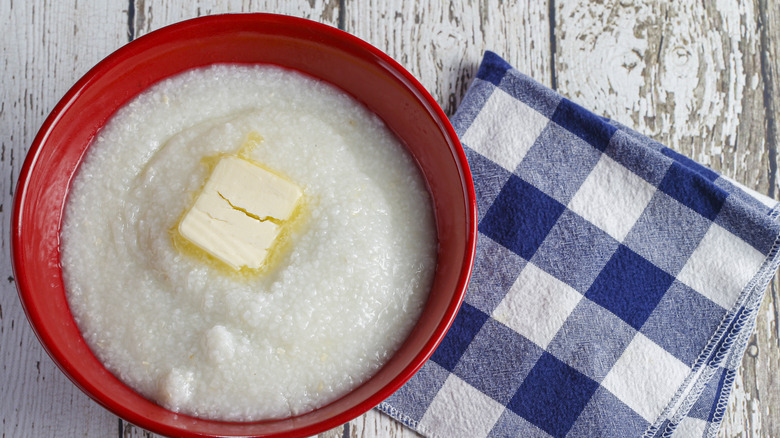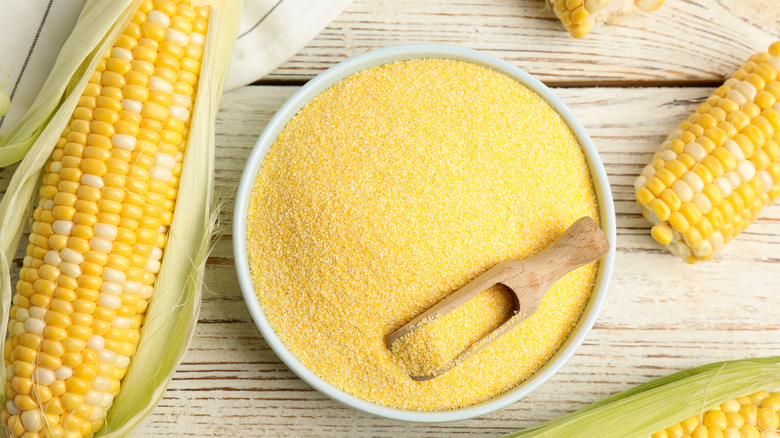Elevate The Texture Of Grits With A Pinch Of Baking Soda
Do you say grits is good or grits are good? So goes the hotly contested, long-running debate, familiar to those mostly in the South. Semantics aside, grits are a beloved staple breakfast food with Native American origins and history and an association with American Southern cuisine. They can also be the perfect comfort food for a savory dinner. The close cousin of other cornmeal-based porridges like polenta, grits are made of ground corn that has undergone processing to remove the outer hull and pulverize the kernels into a coarse grain.
The ideal pot of grits will be creamy, easy to spoon, but firm enough to hold its own shape on a plate, perhaps topped with cheese, veggies, or shrimp. Depending on the type of grain you're using — instant, stone-ground, or quick-cooking — required cook times will vary. But no matter the variety you've chosen, no one enjoys a runny, watery porridge. Easily achieve the perfect creamy texture and save yourself some serious time in the kitchen by utilizing the little-known tip of adding baking soda to the pot. Just a pinch added early in the cooking process helps the grits to thicken up and can cut the needed cooking time in half. Less is more here — just a pinch or two is needed for the "magic" to work. Don't overdo it, or the pot may foam over.
Baking soda speeds up process of gelatinization
The "how" behind adding baking soda to grits requires a quick jaunt back to science class. Baking soda, or sodium bicarbonate, is alkaline in nature, and when introduced to an acid, it creates carbon dioxide and alters the pH. This makes it handy for a whole host of uses: making a cake rise, neutralizing icky odors, soothing an upset stomach, and speeding up your pot of grits. Toss in a pinch, or around ⅛ to ¼ teaspoon, to your pot of boiling liquid (water, or a mixture of water and milk) before adding your grits in. The baking soda works by breaking through the structure of the grains of corn, allowing for the process of gelatinization to occur much quicker than it otherwise would, as the grains of corn absorb the liquid and thicken up.
Like many time-honored staples that generations have grown up on, people tend to have strong opinions about grits. If you grew up in a household where they were a mainstay, you no doubt were passed down a family preference for how to prep and enjoy your creamy porridge. Enhance your tried and true method with just a pinch of baking soda to ensure a perfectly creamy, never-runny texture with each and every pot. So regardless of if you prefer making shrimp and grits, eating them with cheese, or keeping it simple with a slab of butter, and whether you insist it's grits is or grits are, we can all agree — they're just plain good.

